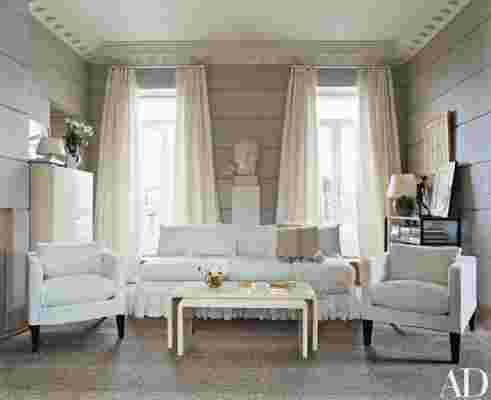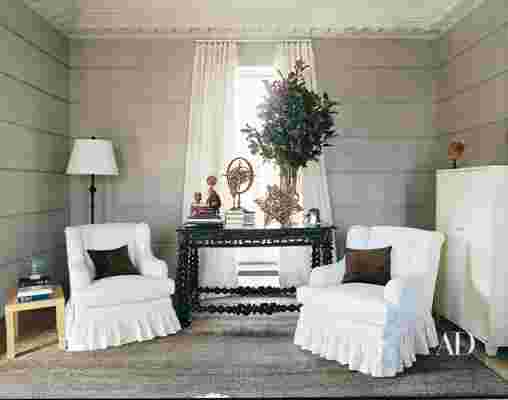This article originally appeared in the January 2012 issue of Architectural Digest.
Life becomes tricky when family pulls one way and home another. More than two decades ago Peter Bren and his wife, Linda, decided to leave their beloved Paris apartment, a sprawling, old-world affair on Avenue Foch decorated by Alberto Pinto, to be closer to their three sons, who were all attending different colleges on the East Coast. The couple settled on a residence in a Rosario Candela building on New York’s Fifth Avenue, a triplex penthouse that had previously belonged to Jules Stein, the pioneering Hollywood mogul and founder of MCA. This transition would seem to be a smooth one—from Parisian glamour to Gotham swank—but the Brens had misgivings.
“I remember telling my husband that I wouldn’t move to New York unless we could live like Cole Porter,” Linda says blithely. “There was no way we could live so far away from our boys, but I adored our place in Paris and the life we had made there.”
To ease the passage, the Brens engaged Thierry Despont, the New York–based French architect and interior designer, to give the triplex a stately European point of view that nevertheless acknowledged its Manhattan context. “Thierry was my French connection,” Linda recalls. “He convinced us that we could make this place work.”
Fast-forward to 2008. The apartment that had served the Brens and their family so faithfully had begun to seem, perhaps, a bit too formal. “As much as we liked all the beautiful Ruhlmann and Leleu furniture, we wanted a place where our children and grandchildren would feel welcome, not like they were sitting in a museum,” Linda explains.
Accustomed to collaborating with elite talents—in addition to Despont and Pinto, she had worked with Michael Taylor in Beverly Hills—Linda eyed Stephen Sills for her latest undertaking. After surveying several of the designer’s signature Manhattan projects and his storied Bedford, New York, country estate, Hi-Low Farm (which Karl Lagerfeld once described as “the chicest house in America”), she was sure of her choice.
“Linda loves the creative process and is very knowledgeable about furniture and decorative arts,” Sills reports. “She didn’t have a specific aesthetic direction for the renovation beyond making the apartment more livable. But she’s naturally drawn to Europe, so we seized the opportunity to make something that feels lush and French but also totally contemporary. It has the spirit of French high style without any hauteur.”
Sills indulged his client’s Francophile bent with a range of furnishings and accessories by André Arbus, Jean Royère, Jean-Michel Frank, Line Vautrin, and other masters of 20th-century design. In the dining room a set of Louis XVI chairs from the estate of philanthropist Alice Tully and a Louis XVI mahogany dining table add historical depth and texture to the rhapsodie française. Sills also commissioned various items—notably the straw-marquetry screen in the master suite’s sitting room—that pay homage to exemplars by Frank and his circle.



Of course, a checklist of greatest hits from the history of design does not in and of itself beget a great home. Sills’s achievement lies in the way he has deftly marshaled the owners’ array of existing treasures and his own choice finds into tableaux of harmonious scale and stature, compositions that feel elegantly of a piece. To take just one example, in the main living room, on the triplex’s center level, the inviting, sumptuous atmosphere is established as much by the window treatments—golden Italian-silk brocade draperies with diaphanous, smoky-amethyst sheers—as by any of the Brens’ objets de vertu.
